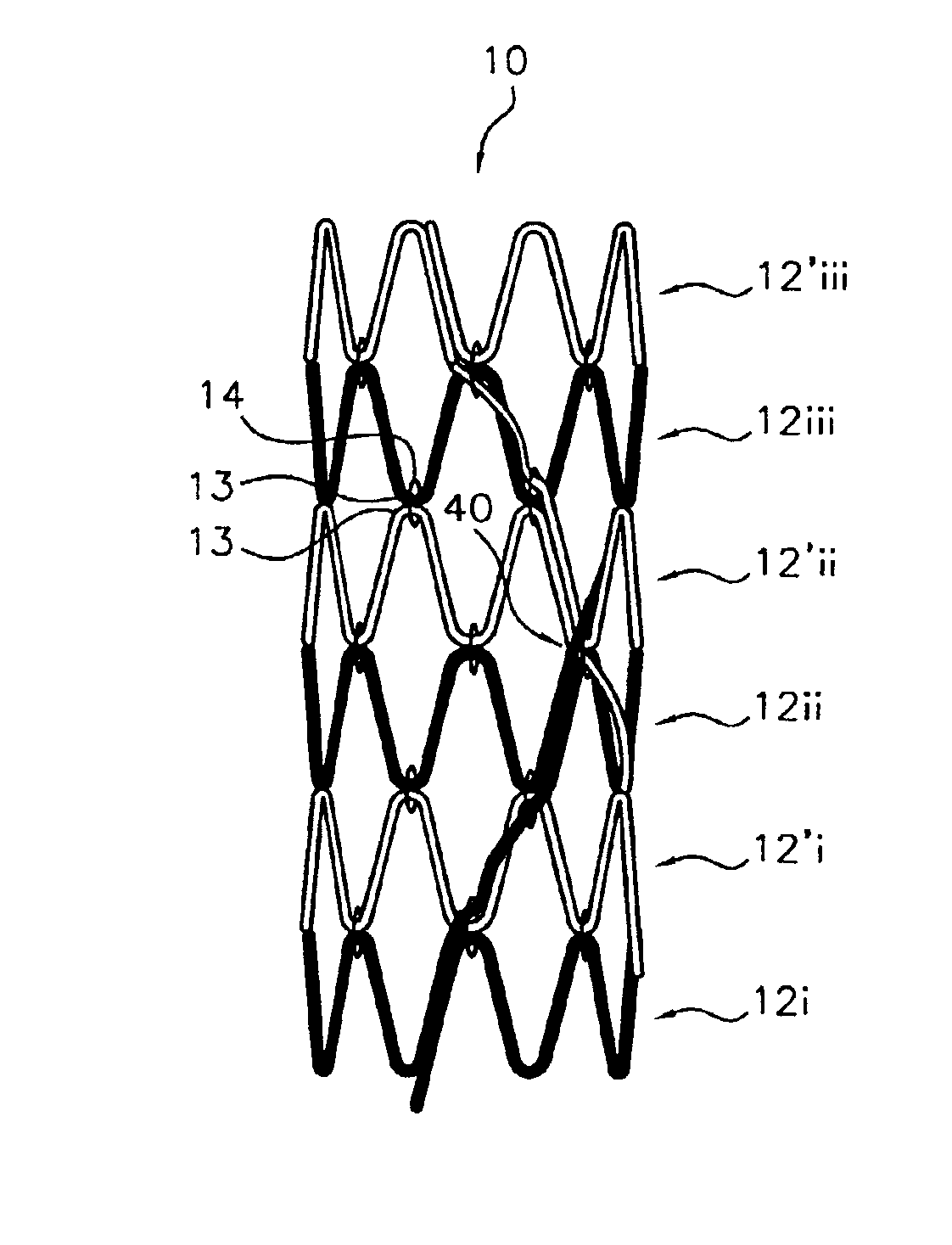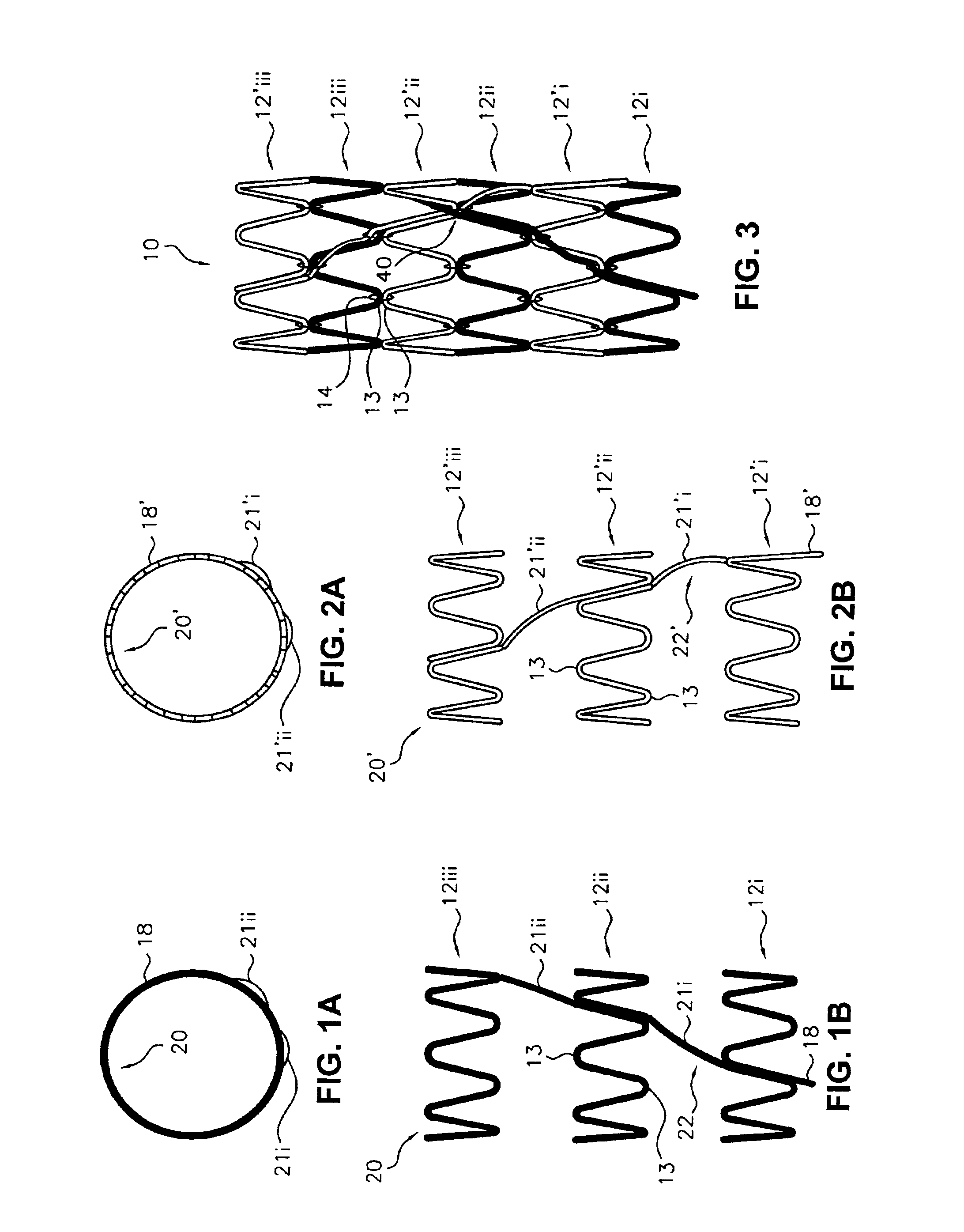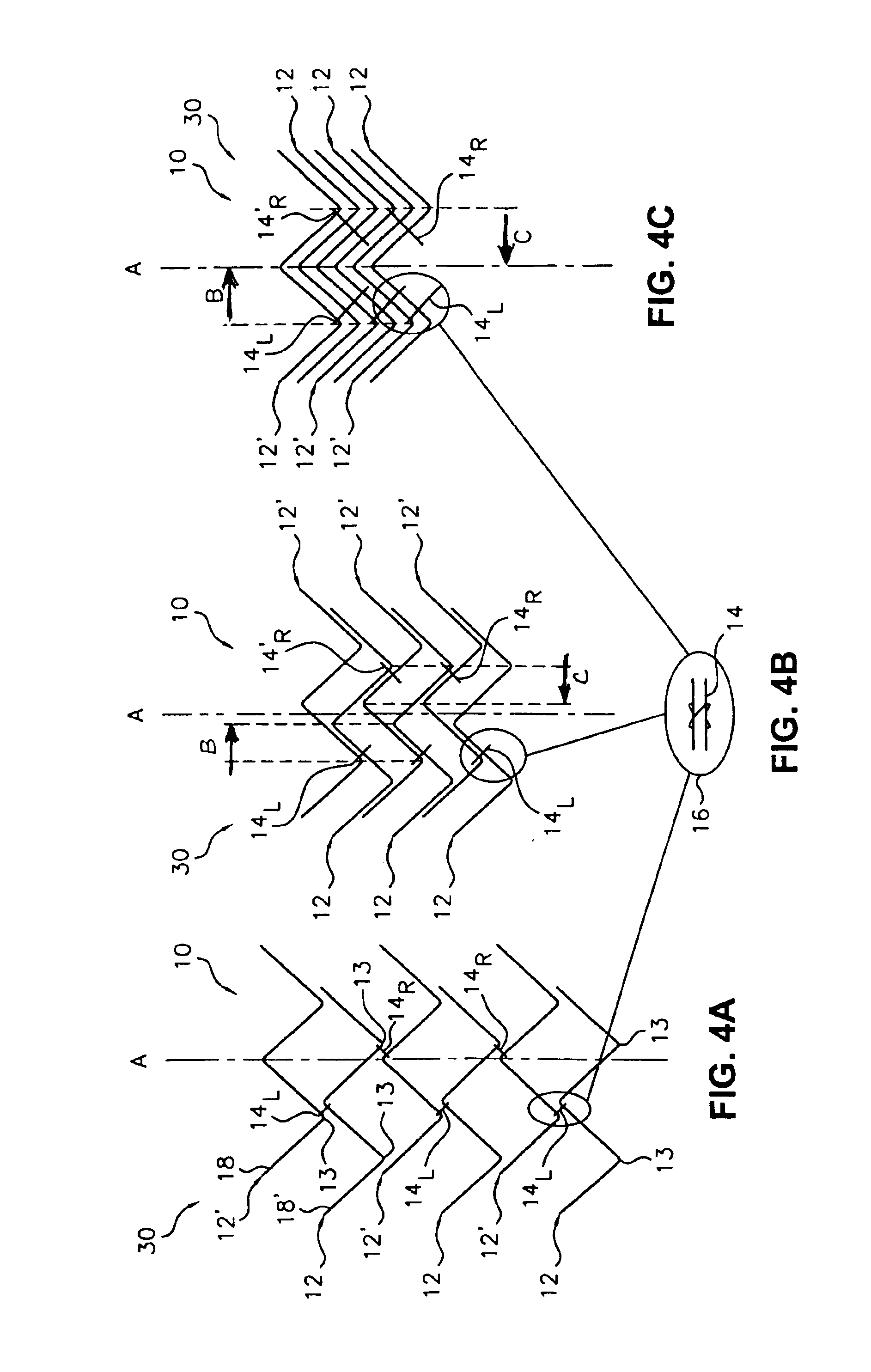Flexible endoluminal stent and process of repairing a body lumen
a flexible, endoluminal technology, applied in the field of endoluminal grafts or “ stents”, can solve the problems of inflexibleness of known stents and inability to adjus
- Summary
- Abstract
- Description
- Claims
- Application Information
AI Technical Summary
Problems solved by technology
Method used
Image
Examples
Embodiment Construction
[0015]Referring now to the drawing, FIGS. 1A-4 illustrate various aspects of an intraluminal compound stent according to the present invention. Generally, compound stent 10 is a tubular stent comprising a plurality of hoops 12i-iii and 12′i-iii disposed axially along the length of the stent. Compound stent 10 comprises two component stents 20 and 20′ joined together: a first component stent 20 having a plurality of axially-disposed individual hoops 12i-iii and a connecting spine 22, and a second component stent 20′ having a plurality of axially-disposed individual hoops 12′i-iii and a connecting spine 22′. The hoops of the first and second component stents are meshed together so that at least one hoop of one component stent is positioned between axially adjacent hoops of the other component stent, as shown in FIG. 3. For example, hoop 12′i is positioned between hoops 12i and 12ii, hoop 12ii is positioned between hoops 12′i and 12′ii, and so on.
[0016]As shown in FIG. 3, hoops 12i-iii...
PUM
 Login to View More
Login to View More Abstract
Description
Claims
Application Information
 Login to View More
Login to View More - R&D
- Intellectual Property
- Life Sciences
- Materials
- Tech Scout
- Unparalleled Data Quality
- Higher Quality Content
- 60% Fewer Hallucinations
Browse by: Latest US Patents, China's latest patents, Technical Efficacy Thesaurus, Application Domain, Technology Topic, Popular Technical Reports.
© 2025 PatSnap. All rights reserved.Legal|Privacy policy|Modern Slavery Act Transparency Statement|Sitemap|About US| Contact US: help@patsnap.com



